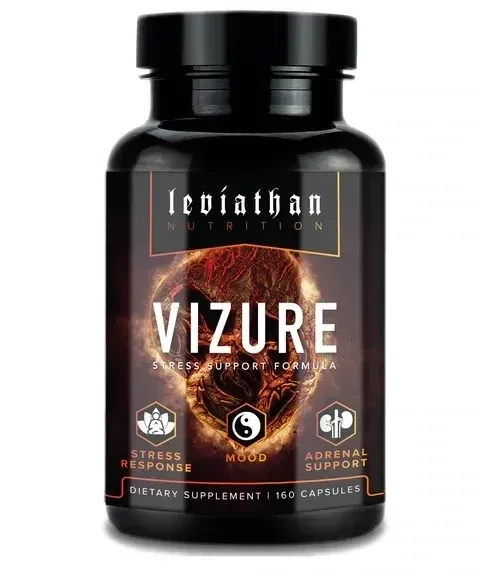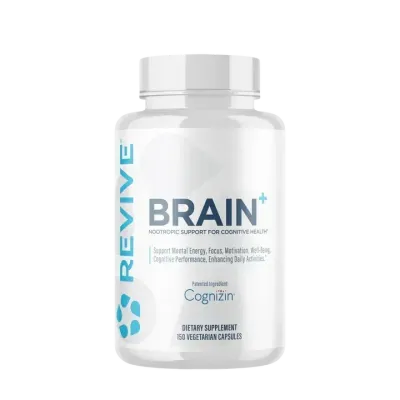🚚 Free Shipping on Orders $49+
Leviathan Nutrition Vizure
5.0
1 review
Reviews from verified customers who have purchased products at this store.
$44.99
Everyday Low Price
List Price: $49.98 Save 10%
Buy & Earn Loyalty Cash
Earn $2.24 in Loyalty Cash to use on future orders
Loyalty is a discount program that lets you buy products and earn points to redeem on your next purchase. Your Loyalty balance is updated when you pay online or in-store. The Loyalty amount shown on this page can be recalculated at the checkout.
Beat stress, boost performance naturally
Size
In stock: 13 available
1
Save to Favorites
Customer reviews
Reviews only from verified customers
Reviews are only accepted from verified customers who have signed in and purchased the products.
John L.
Greer,
United States
11-09-2025
Awesome product. Usual day is an early lift with copious stims. Taking this mid day, about 5 days in you can tell youre not feeling strung out. More balanced feeling and easier to wind down after work without feeling completely run down.
Leviathan Nutrition Vizure
Product Details
Brand: Leviathan Nutrition
Form: Capsule
Goal: Feel Calmer & Balanced
Serving Size: 4 Capsules
Servings Per Container: 40
UPC: 649985355370
Stress Support
Vizure May Assist with:
- Mood Support
- Mental and Physical Fatigue
- Athletic Performance
- Libido and Virility
- Memory and Cognition
How Do Adaptogens (like those found in Vizure) Work?
Adaptogens have been studied for their ability to exhibit neuroprotective, anti-fatigue, anti-depressive, anxiolytic, nootropic, and CNS stimulating activity. Studying these compounds at the molecular level gives a better view of how exactly they are working. Adaptogens are able to work on the Hypothalamic-Pituitary-Adrenal Axis (HPA Axis), cortisol, nitric oxide, and molecular chaperones (Proteins that assist in the assembly or disassembly of other large molecular structures.
Ingredients such as Rhodiola Rosea and Eleuthero contain chemical compounds in them that closely resemble the catecholamines, which mediate the SympathoAdrenal System (SAS). In the SAS, catecholamines are released into the blood by nerve fibers, which is responsible for the 'fight-or-flight' response. The SAS works to return the body to homeostasis through activation or inactivation of the adrenal gland. The 'catecholamine-like' compounds found in Rhodiola Rosea and Eleuthero are able to transmit responses through the adrenal gland similarly to how the catecholamines do, this is the mechanism by which these ingredients can exert many of their benefits.
Other chemical compounds found in these adaptogen ingredients closely resemble the structure of the corticosteroids, which are stress hormones that are involved in protective inactivation of the stress system. These compounds are able to effect the glucocorticoid receptors, which are what cortisol binds to in order to display its effects.
VIZURE FAQ:
- WHAT DOES VIZURE DO?
Vizure is an all in one adaptogen product, which benefits consist of balancing cortisol, boosting mood, sexual function, memory & cognition, and physical performance. - WHO IS VIZURE FOR?
This product is for those with high stress levels, looking to improve physical performance, boost mood, libido, and combat anxiety. - WHEN WILL I SEE RESULTS?
Boosts in energy and mood, reduction in stress level, and increase in sex drive can be noticed after immediate use, with continual daily use having a more pronounced effect on these benefits over time. - HOW MUCH/HOW OFTEN SHOULD I TAKE IRE?
This product should be taken every day, 4 capsules twice per day is the recommended dose for maximum results.
Key Vizure Ingredients Per Serving:
- 1000mg Maca Extract (Standardized to 0.6% Macamides & Macaenes) per serving, macamides and macaenes are a class of chemicals found only in maca root, which are responsible for its benefits to libido and fertility
- 800mg Eleuthero (Siberian Ginseng, Standardizded to 0.8% Eleutherosides) per serving, a clinical study has documented a dose of 800mg Eleuthero daily for 8 weeks to enhance endurance capacity, elevate cardiovascular function and alter the metabolism for sparing glycogen in trained males. The Eleutherosides (A-E) are the characteristic compounds found in this ingredient, and are standardized to contain at least 0.8% of these per serving. Eleutheroside A is similar in chemical structure to the corticosteroids, which attributes to its role in modulating the stress hormone cortisol.
- 750mg Cordyceps Militaris 10:1 Extract (Standardized to 0.3% Cordycepin, 20% Beta-D-Glucans) per serving, known for its benefits to exercise performance, reducing physical fatigue, anti-inflammation, anti-aging, heart health, and immune system benefits. The Cordyceps Militaris Extract in VIZURE has been extracted and standardized to contain the highest amount of Cordycepin possible. Cordycepin is the main active constituent which is most widely studied for its medicinal value having a broad spectrum of biological activity, including important immunoregulatory benefits. Cordycepin is very similar in chemical structure to adenosine, and acts like a nucleoside analogue. This allows Cordycepin to play a role in RNA synthesis and RNA chain termination.
- 650mg Rhodiola Rosea (3% Rosavins 2% Salidrosides) per serving, used to stimulate the nervous system, extenuate anxiety, enhance work performance, and relieve mental and physical fatigue. Rhodiola is the main adaptogen approved by the Committee on Herbal Medicinal Health Products (HMPC) for the indication 'stress' and influences the release of stress hormones while boosting energy metabolism. Rhodiola Rosea has been shown to be effective at boosting physical and mental performance at doses up to 680mg daily. The salidroside compounds in Rhodiola are similar in chemical structure to the catecholamines, which are able to transmit responses through the adrenal gland, which act on the Sympatho Adrenal System and deliver small amounts of stress signals to the body in order to have it better adapt to larger amounts of stress, which is the mechanism by which Rhodiola fights physical and mental fatigue.
- 600mg KSM-66® Full Spectrum Ashwagandha (Standardized to ≥5% Withanolides) per serving, KSM-66® is an ashwagandha that has been standardized to contain at least 5% withanolides. Withanolides are the active compound contained in ashwagandha, and are responsible for benefits such as reducing anxiety and stress, boost fertility and testosterone in men, and increase athletic power output and strength. KSM-66® is the most well studied form of ashwagandha, and contains the highest content of biologically active compounds such as the withanolides.
- 500mg Reishi (Fruiting Body, Dual Extract 35% Beta-D-Glucans) per serving, our Reishi has been extracted using both water and alcohol compared to most Reishi extracts only being extracted using water. Extracting with both water and alcohol as solvents means that more beneficial compounds are able to be collected and retained in the final product. Reishi is used to enhance the immune system, reduce stress, improve sleep, and lessen fatigue. Our Reishi is standardized to contain at least 35% Beta-D-Glucans, which are where the pharmacologically active class of compounds are present in the mushroom.
- 300mg Bacopa Monnieri Extract (55% Bacosides) per serving, Bacopa has been extensively studied at a 300mg daily dose to boost cognitive function, improve memory retention, and prevent cognitive decline both in the short term and long term. Our Bacopa is standardized to contain the highest amount of Bacosides possible, which are the biologically active compounds present in Bacopa which improve cognitive function.
You May Also Like

Blackstone Labs Adrenal Care
Blackstone Labs Adrenal Care
Restore Adrenal Health & Manage Stress Naturally
5.0
$39.99
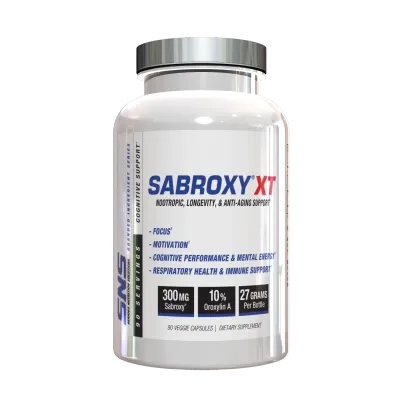
Serious Nutrition Solutions Sabroxy XT
Serious Nutrition Solutions Sabroxy XT
Unlock motivation with 300mg Oroxylin A
5.0
$27.99
15% Off In Cart
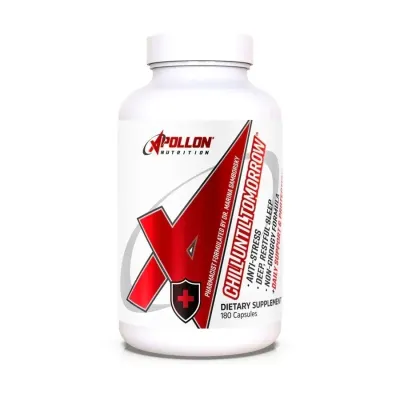
Apollon Nutrition Chill Until Tomorrow
Apollon Nutrition Chill Until Tomorrow
Stress down, sleep deep—wake up recharged
5.0
$44.95
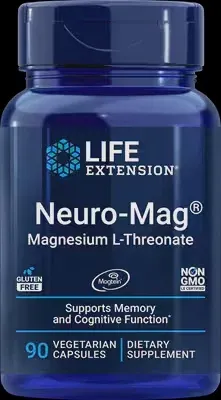
Life Extension Neuro-Mag Magnesium L-Threonate
Life Extension Neuro-Mag Magnesium L-Threonate
Ultra-absorbable magnesium for sharper brain health
$31.50
Display prices in:USD
